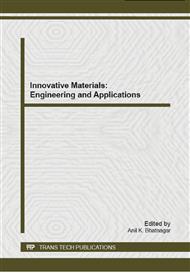p.163
p.169
p.173
p.181
p.188
p.193
p.198
p.203
p.207
A Facile Synthesis and Optical Properties of Novel 2-substituted-5-naphthylmethylene Thiadiazole Derivatives
Abstract:
Three aryl and three naphthylmethylene derivatives containing thiadiazole ring have been synthesized. The structures of target compounds were characterized on the basis of spectral (FT-IR, 1H NMR, and MS). The optical properties were detected using UV-vis absorption spectroscopy and fluorescence spectroscopy. The absorption spectra of 1a, 2a and 3a substituted by naphthylmethylene are primarily characterized by a peak around 284 nm originating from naphthalene, which is different from that of compounds 1b, 2b and 3b. Compared to 1a and 2a (separated by a saturable atomic cluster −CH2−), the maximum absorption wavelength of 1b and 2b takes on obvious red-shifted, which is from thiadiazole and benzene with more large conjugated system. The fluorescence intensity of 2-(4-aminobenzoyl) amide-5-naphthylmethylene-1,3,4-thiadiazole (3a) was significantly higher than that of 5-(4-aminobenzoyl)-1,3,4-thiadiazole (3b) due to the presence of naphthalene.
Info:
Periodical:
Pages:
188-192
Citation:
Online since:
October 2014
Authors:
Keywords:
Price:
Сopyright:
© 2014 Trans Tech Publications Ltd. All Rights Reserved
Share:
Citation:


